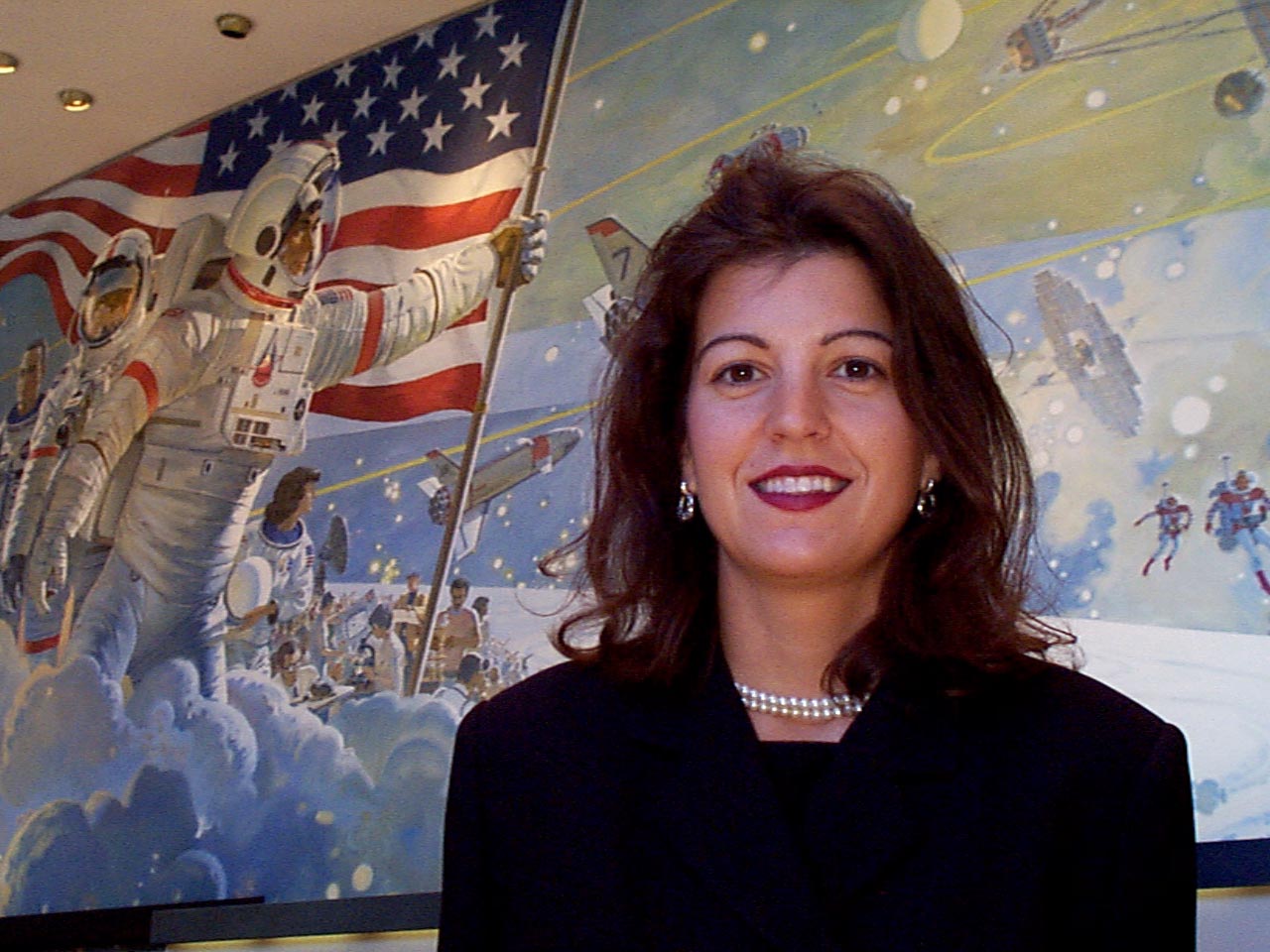
Stepping Stones:
JSC Astromaterials Team
Prepares for the Future
By Nicole Cloutier
Reprinted from the July 30, 1999 JSC
Roundup
Protected by more than 18 inches of concrete and steel, a motion detector system and sound-build-up alarm quietly resides the country’s Moon, meteorite, and cosmic dust samples in JSC’s curation facility. But inside those reinforced walls, researchers and acclaimed scientists are piecing together the solar system’s history bit-by-bit, while preparing to make some history of their own.
“Being NASA’s home of extraterrestrial materials makes us a unique facility,” said Dr. Carl Agee, chief scientist for astromaterials. “But the continued work here has prepared us for making history again — by receiving the samples that will be brought back from Mars in 2008.”
A visitor’s scan across the JSC campus would hardly suggest that one of our national treasures is neatly tucked away in Bldg. 31N. But there, the Lunar Sample Laboratory Facility houses the more than 842 pounds of lunar rocks, core samples and soils gathered during six Apollo lunar landings, plus a small amount (3/4 of a pound) from unmanned Soviet missions. Although the samples were collected more than 27 years ago, nearly 1,000 samples are distributed each year for continuing research and teaching projects.
Improvements in research technology along with fresh theories from budding researchers allow scientists to revisit unanswered questions and pursue new ones.
“Lunar sample research is not complete by any means — it is alive and well,” said Andrea Mosie, a senior scientist for Lockheed Martin at JSC. “People sometimes visit the facility expecting to find a museum, but it’s not. It is a working lab with research continuing everyday.”
Mosie celebrated more than 24 years with the facility in June and provides an invaluable “corporate memory” for the center. Others like her make up the lunar sample team, which experiences low turnover. Lunar sample processor Linda Watts similarly is a 23-year veteran of the team, and Dr. Gary Lofgren, head curator for the Lunar Sample Facility, has been on staff since 1968.
“It’s a rare find in itself,” said Dr. Agee of the wealth of experience among the astromaterials team and the Planetary Sciences Branch of SN. After 8 years as an Earth and planetary sciences professor at Harvard, Dr. Agee joined JSC Director George Abbey’s senior staff in August 1998 to lead the center’s astromaterials research and to prepare facilities for Mars sample return. “The amount of enthusiasm and involvement from colleagues here at JSC, all working towards this common goal, all with lots of new ideas and approaches, makes for a very stimulating environment.”
The goal Dr. Agee refers to is NASA’s forthcoming missions to Mars for sample retrievals.
Although sample return missions aren’t planned to visit the Red Planet until 2003, and a second in 2005, discussions are already under way about facilities needed to accommodate the samples once they arrive.
Compared with the lunar sample facility, which is a model laboratory, Mars presents many new issues to contend with.
“The lunar facility has turned out to be a wonderful stepping-stone for preparing us for the Mars samples,” said Dr. Lofgren. “But the Mars samples will bring new challenges for clean room and laboratory processes, which is what we are working on now.”
The lunar facilities, regarded as a level 1000 clean room, require researchers to gear up with full-coverage smocks (“bunny suits”), caps and gloves and undergo an “air shower” before entering the ‘pristine’ laboratory. The samples are additionally contained in nitrogen-filled glove box cabinets. Samples are loaned out for external research, but only about 10 percent of the collection are considered compromised and are kept separated from the ‘pristine’ samples upon return.
All of these barriers are designed to protect the lunar samples from Earth oriented contaminants, but Mars samples will need two-way contamination control.
“We’ll be investigating the Mars samples for life forms and organic compounds,” said Dr. Lofgren. “This requires a new process to handle quarantine and analysis, both to protect the samples from Earth contaminants as well as protecting us from any unknown contaminants the samples might contain.”
Reduced pressure, colder temperatures, and mimicking of a C02 rich environment are other facility issues still being considered.
The Mars samples will be coordinated in two separate phases: initial assessment, quarantine and analysis and then archiving, curation and distribution. Soon, NASA will assess various sites for these projects, including White Sands Test Facility, Ames Research Center and JSC. JSC’s experience with the lunar samples uniquely positions it as a coordinating site for the Mars samples, but it may be more than a year before an official decision is made.
Meanwhile, under the leadership of team member Dr. Eileen Stansbery, construction is currently under way in Bldg. 31N for a new facility for the Genesis project. Nearing completion in July, this facility is located directly beneath the lunar lab and will house specimens from the Genesis discovery mission. Genesis is a three-year mission scheduled to depart in 2001. It will collect atoms from the sun’s radiation onto silicon, diamond, aluminum, and gold wafers for analysis in the new lab upon return to Earth. This research will help understand our sun and the chemical make up of our solar system.
“All of the projects and research done at our astromaterials facility are aimed at understanding our solar system,” explains Lofgren. “We’re unraveling the stories of our universe piece by piece.”